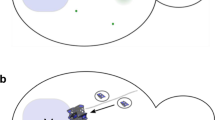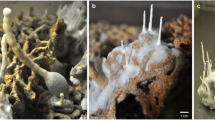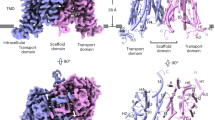Abstract
TUTIN (C15H18O6) was first isolated by Easterfield and Aston1 and identified as the convulsive poison present in the leaves and seeds of the New Zealand species of Coriaria, a shrub known by the Maori as ‘toi toi’. The molecular structure of tutin is now inferred from an X-ray crystal structure analysis of α-bromo-iso-tutin.
This is a preview of subscription content, access via your institution
Access options
Subscribe to this journal
Receive 51 print issues and online access
$199.00 per year
only $3.90 per issue
Buy this article
- Purchase on SpringerLink
- Instant access to full article PDF
Prices may be subject to local taxes which are calculated during checkout
Similar content being viewed by others
References
Easterfield, and Aston, J. Chem. Soc., 79, 120 (1901).
Sutter, and Schlittler, Helv. Chim. Acta, 32, 1855 (1949).
Johns, Slater, Woods, with (in part) Brasch and Gee, J. Chem. Soc., 4715 (1956).
Karyone, and Okuda, Bull. Inst. Chem. Res., Kyoto Univ., 31, 387 (1953). cf. Chem. Abs., 48, 9971 (1954).
Conroy, J. Amer. Chem. Soc., 73, 1889 (1951).
Conroy, J. Amer. Chem. Soc., 79, 5550 (1957).
Craven, Tetrahedron Letters, 19, 21 (1960).
Craven, Acta Cryst., 15, 387 (1962).
Johns and Markham, J. Chem. Soc., 3006 (1961).
Craven, Acta Cryst., 12, 254 (1958).
Author information
Authors and Affiliations
Rights and permissions
About this article
Cite this article
CRAVEN, B. Molecular Structure of Tutin. Nature 197, 1193–1194 (1963). https://doi.org/10.1038/1971193c0
Issue date:
DOI: https://doi.org/10.1038/1971193c0
This article is cited by
-
The toxic natural product tutin causes epileptic seizures in mice by activating calcineurin
Signal Transduction and Targeted Therapy (2023)



